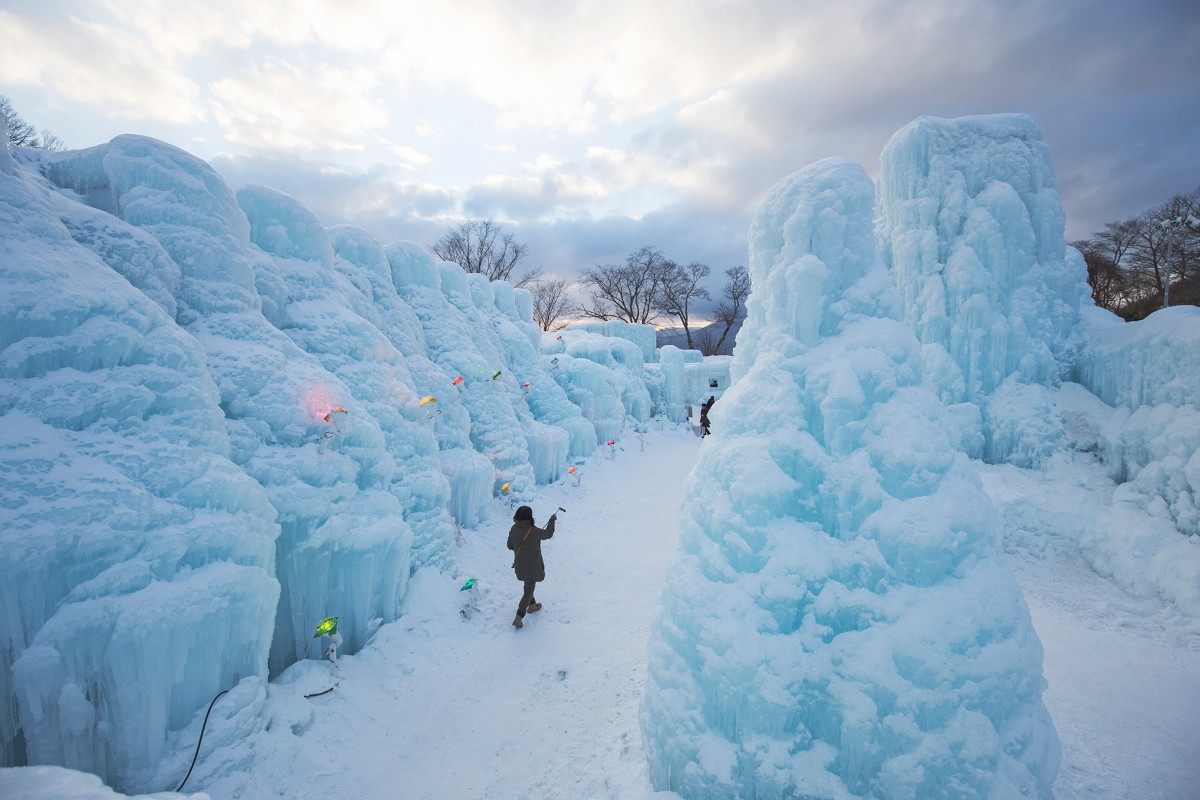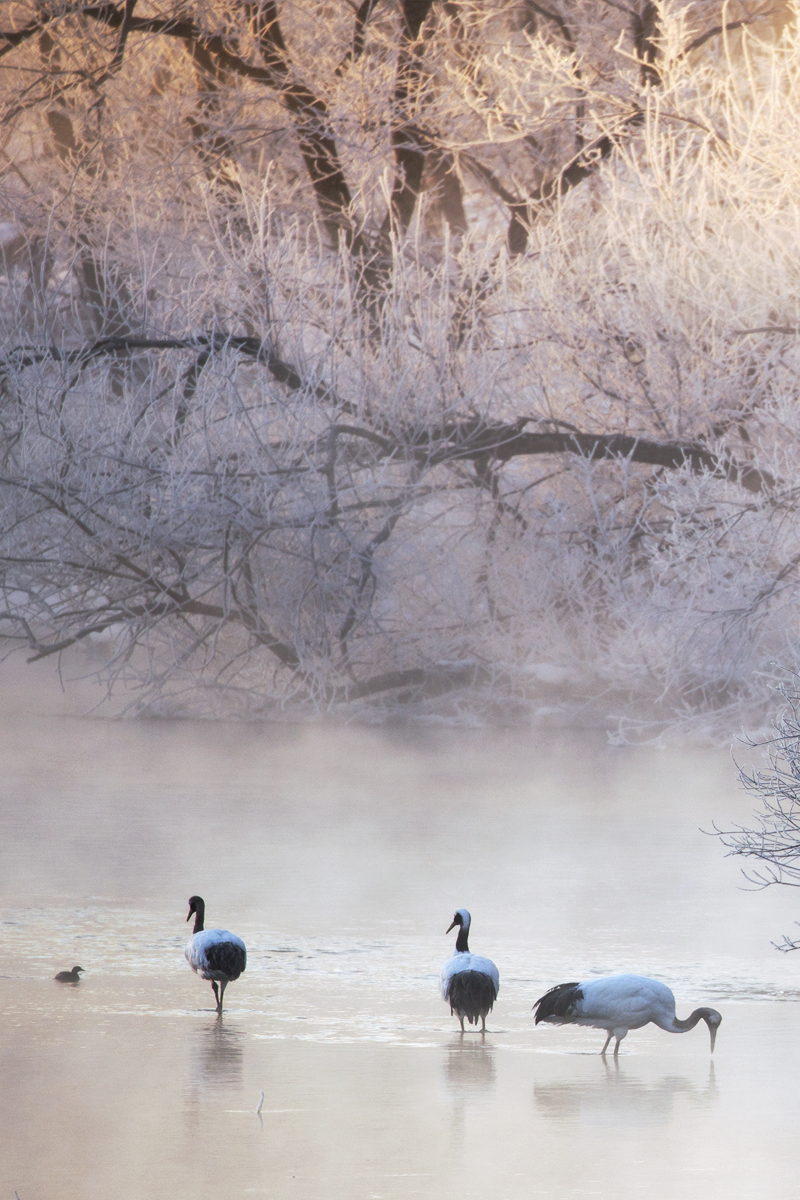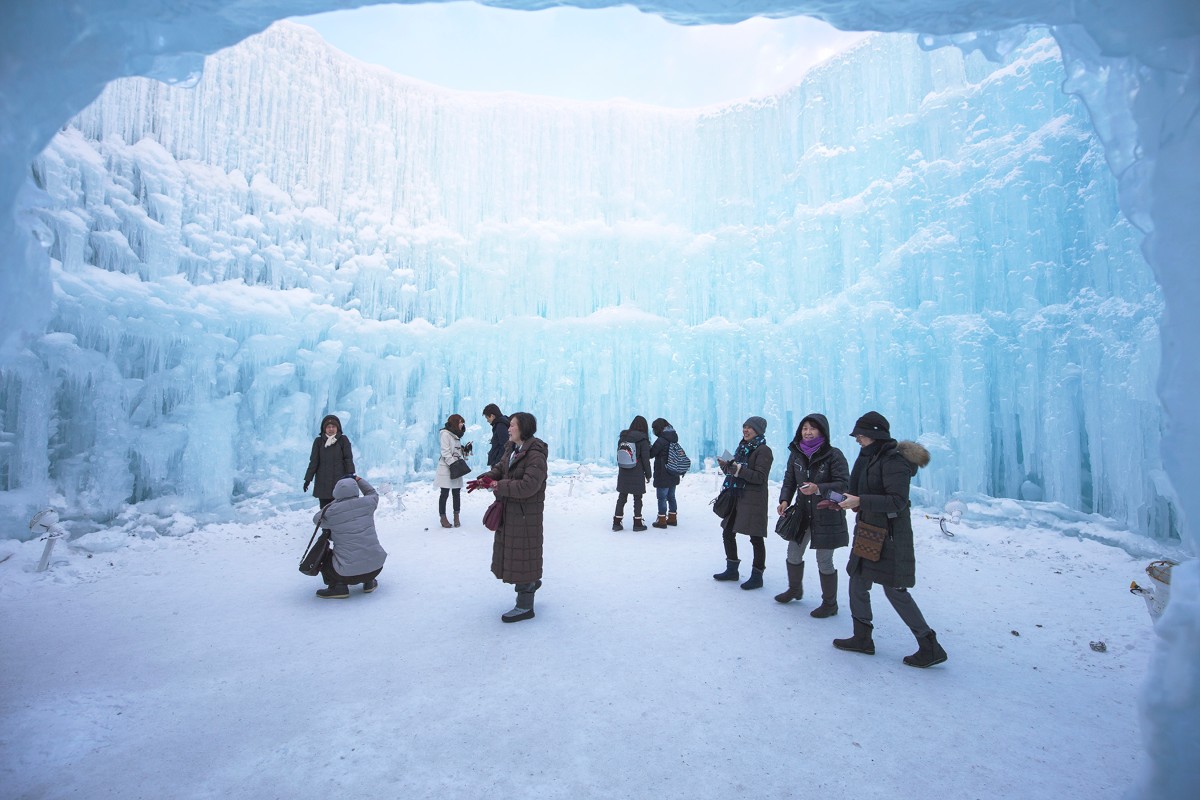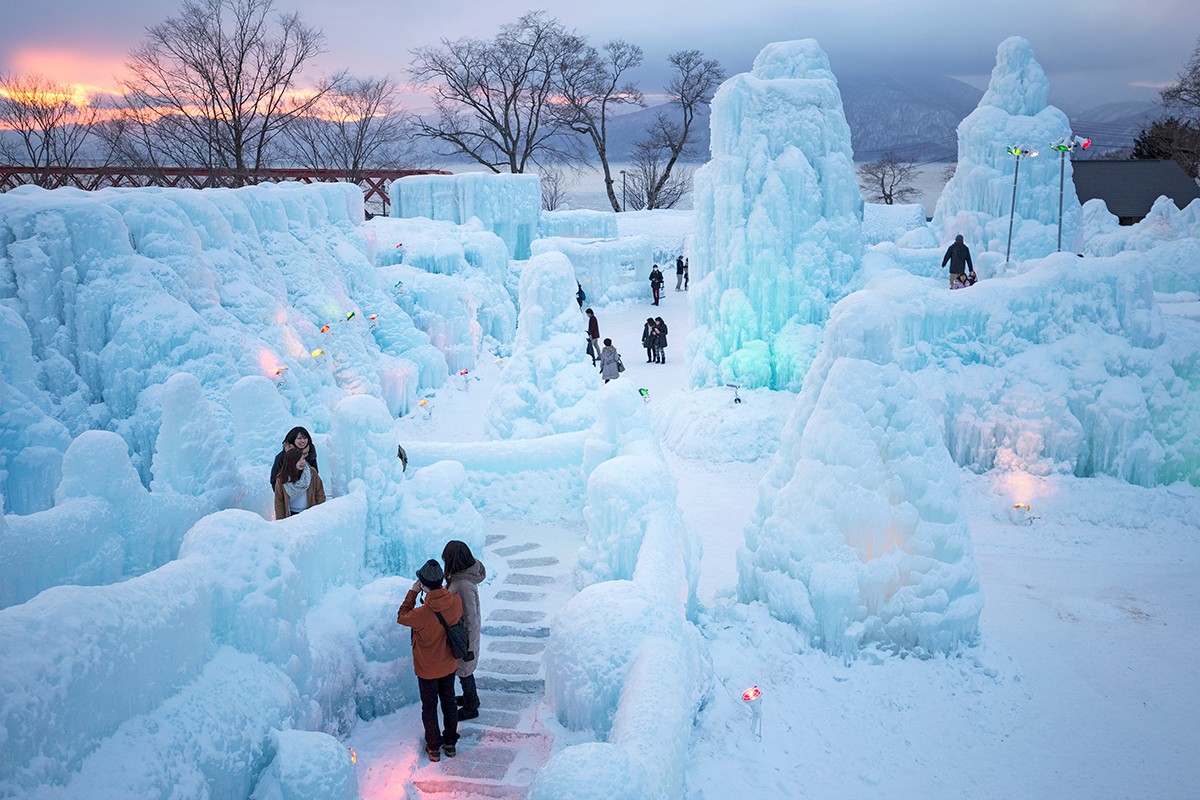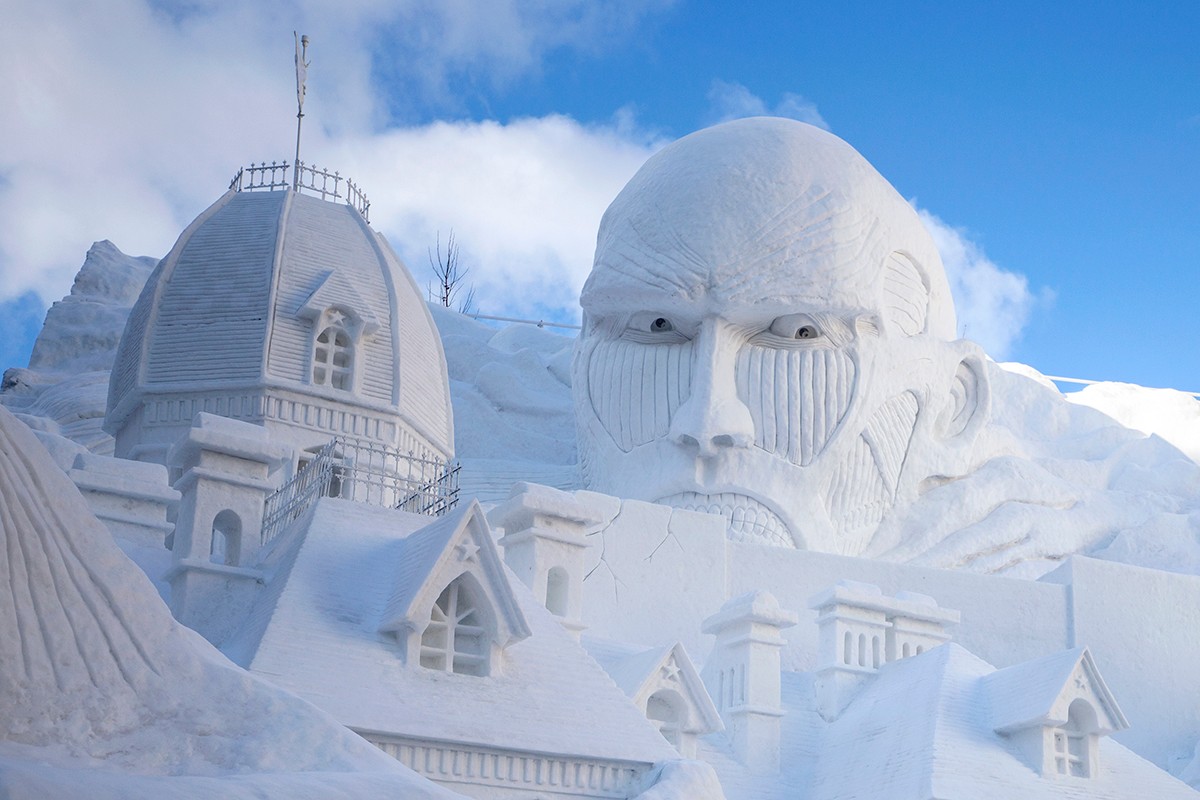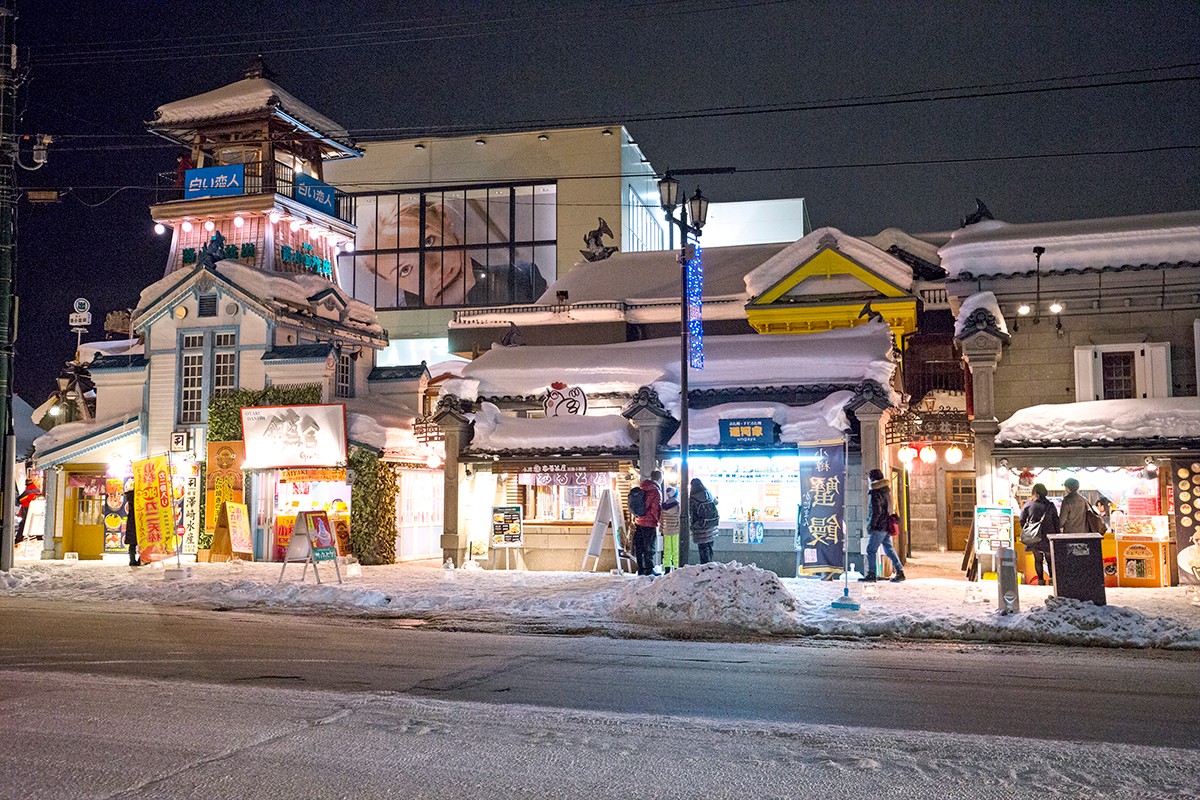Most people would be pining for the equator come February, but those brave enough to head further north will find the rewards grossly outweigh any chill factor in Japan’s island of Hokkaido. The sheer novelty of the scenery nearly brings a tear—or icicle—to the eye. For me, the highlights of this winter destination are without question the natural. Red-crowned cranes, Ural owls, ice floes, Steller’s sea eagles, White-tailed eagles, Blackiston’s fish owls, and the odd fox playing peek-a-boo amidst fields swathed in fresh, unadulterated snow. Add to that list some excellent food, innumerous hot springs, some of Japan’s most famous festivals, and you have one fine trip to write home about.
I initially faced my visit to Tsurui with great trepidation. Spending an hour on a bridge spanning a miraculously unfrozen river, from predawn, in minus twenty-degree weather sounded like special recompense for a terrible crime I forgot I committed. I planned to buy every twill and tweed sold on this planet in preparation, perhaps wrap myself in a mattress and set it ablaze. Unfortunately for those who would have benefited from my collateral warmth, I instead decided to get some HEATTECH from Uniqlo, which possesses magical properties, like elven fabric. I slapped a few hokkairo (adhesive heating pads) on the inside of my down jacket and I was plenty warm. Despite value-oriented tech coming to my aid, the internal thermostat is a moot point when the eyes bear witness to the sunrise from this well-chosen spot. The gradual, but visible traverse of night to day perfectly parallels the emotional crossover from fear to awe; I never knew beauty to produce heat as it did in this instance. It was as if a curtain were being pulled back to reveal an exquisitely set opera or kabuki, or as if some greater-dimensional being, perhaps the Sun, were playing with the luminosity and saturation sliders on our moving image. Everyone is dumbstruck, the only audible sounds apart from camera shutters and the squeaky-crunchy compression of snow and ice under the weight of people’s steps as they jockey for new positions is the flapping of wings, from which this bridge gets its name: Otowa-bashi. No one beside me shot less than a thousand pictures that morning. The sun ignites the trees, turning the frost every color of warmth in the visible spectrum, you might think for a moment you’re looking at cherry blossoms, but it’s just refracted starlight, negotiating with the trees on its way to the steaming river teeming with a flock of endangered species dancing around inside it as if they were aware just how awesome they look at that very moment.
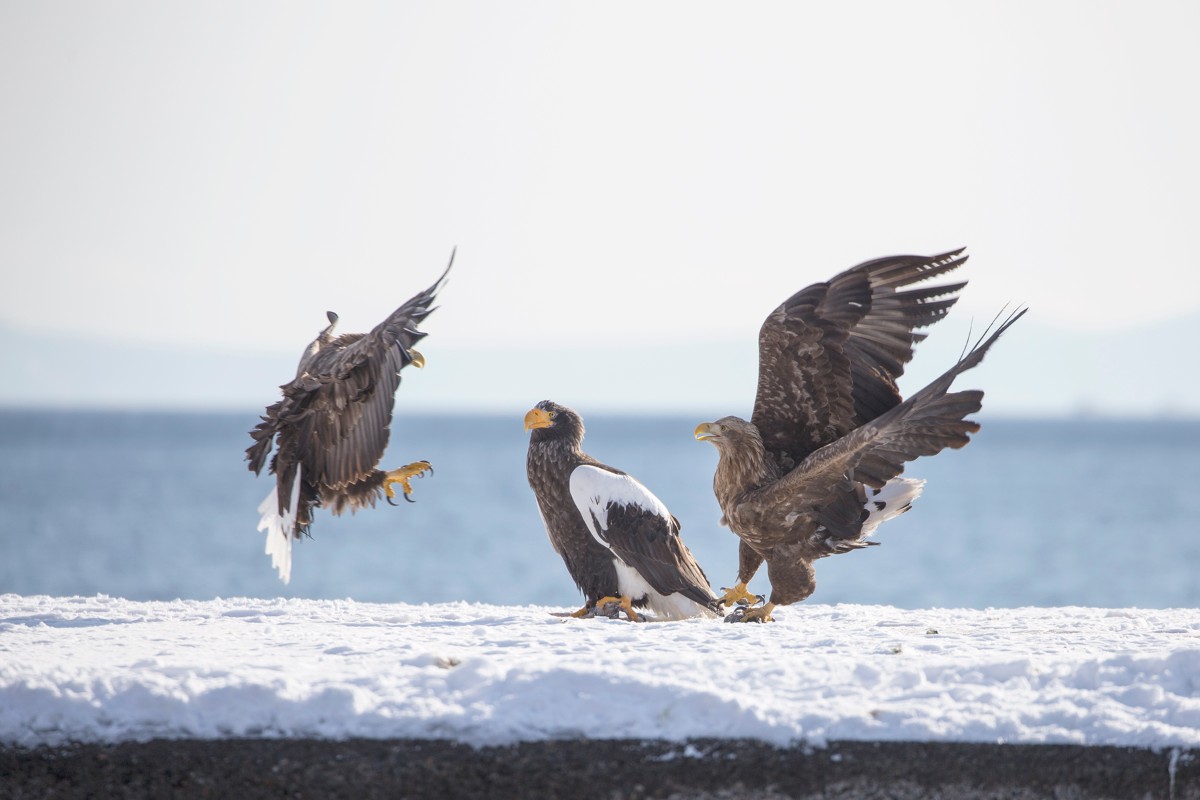
Further up the eastern coast of Hokkaido, Rausu is where truly enormous birds reside. Some of the largest presently in existence actually. These are big birds; I can’t stress that enough. The fish they catch are about the size of a man’s arm. A boat takes you a short distance out to sea, frozen fish are flung from the deck, and you try your best to snap a prized picture of these regal raptors as they circle and swoop down to our world. Both Steller’s sea eagles and white-tailed eagles make for a majestic show, but you aren’t yet aware you’re amongst the feathered equivalent of a 747 until the boat makes a slight detour on its return to port and gives you an up-close and personal experience by taking you within a couple of meters of these legendary creatures. Then you realize. Then you realize they could eat you. Luckily, you don’t look like a fish. One could easily cause you grief, a couple could probably take you for a joy ride. What fantastic specimens. In the evening you can hail the town’s single taxi to take you to see the Blakiston’s fish owls at Washi-no-Yado, provided you’ve made a reservation beforehand. http://fishowl-observatory.org/reserve.html

All that wonderful wildlife and nature aside, there are some truly magical festivals taking place in early February, such as the Lake Shikotsu Ice Festival and the Otaru Snow Light Path Festival. The largest, of course, is the Sapporo Snow Festival, with millions coming from around the nation and globe every year to see the best artisans intricately sculpting snow and ice into splendid works of varying size, some the height of multistory buildings. It is one of Japan’s most famous festivals, but it’s not the only thing we think of when we hear of Sapporo, the eponymous beer is the oldest in the land and can be enjoyed at outdoor beer gardens and ice bars. It washes down grilled mutton a treat, which is the other local specialty. In fact, an all-you-care-to-eat mutton barbecue is included at the Sapporo Beer Garden, inside the beautifully reconstituted brick brewery, where merriment is as bottomless as the food and drink. Yep, Hokkaido is a spectacular destination and well worth spending a week or two on your next holiday.

